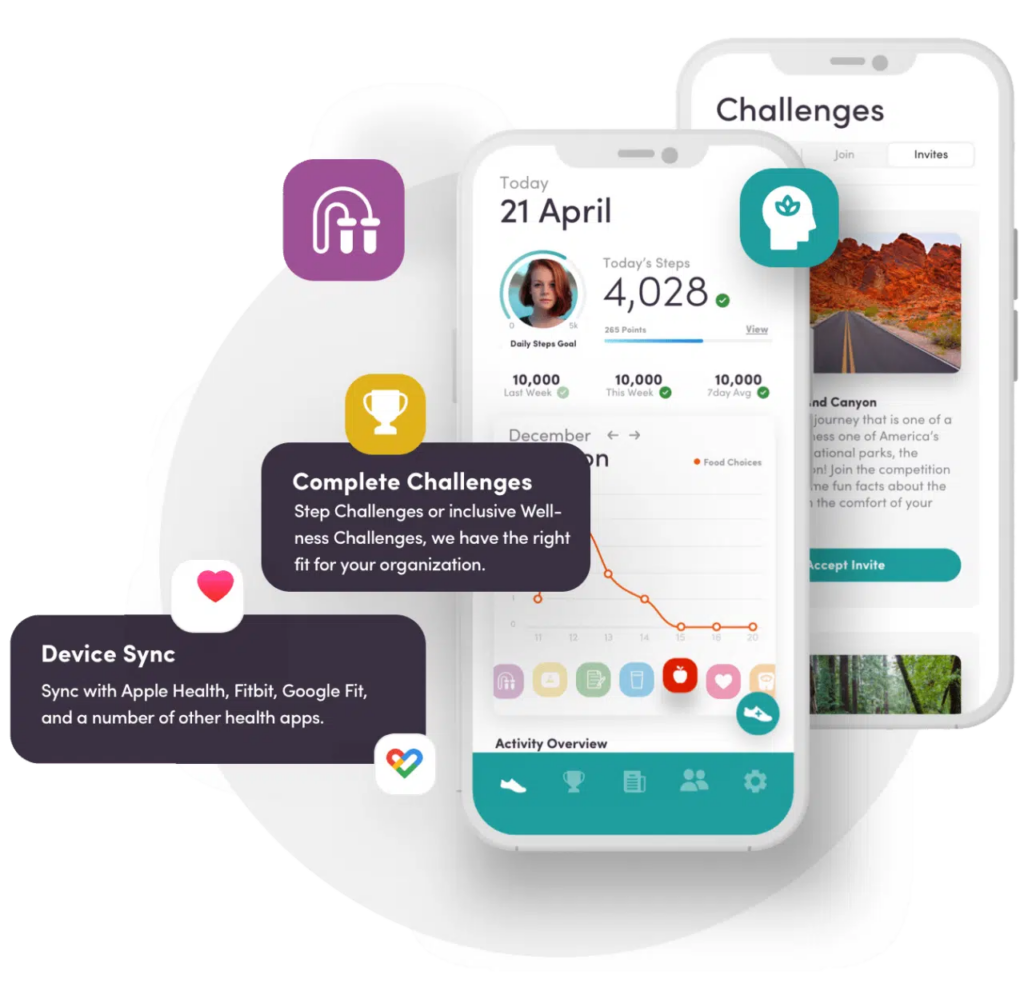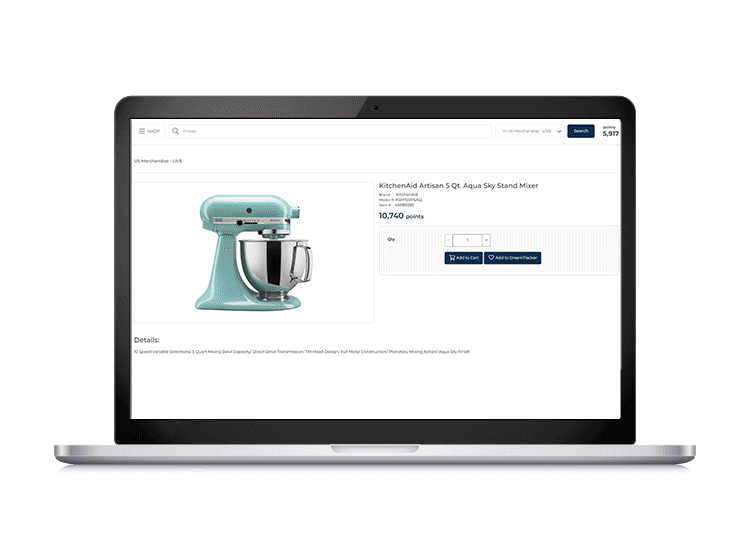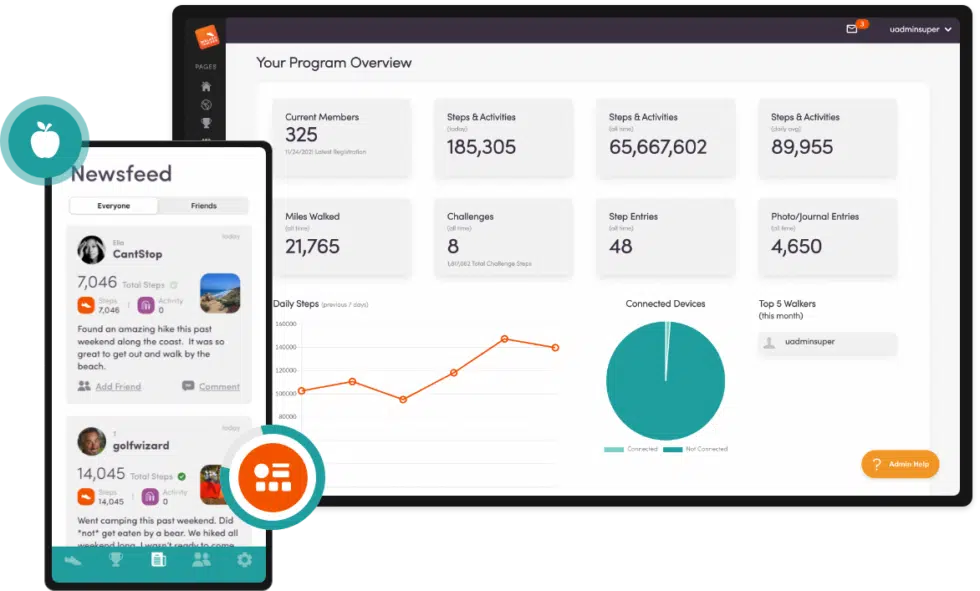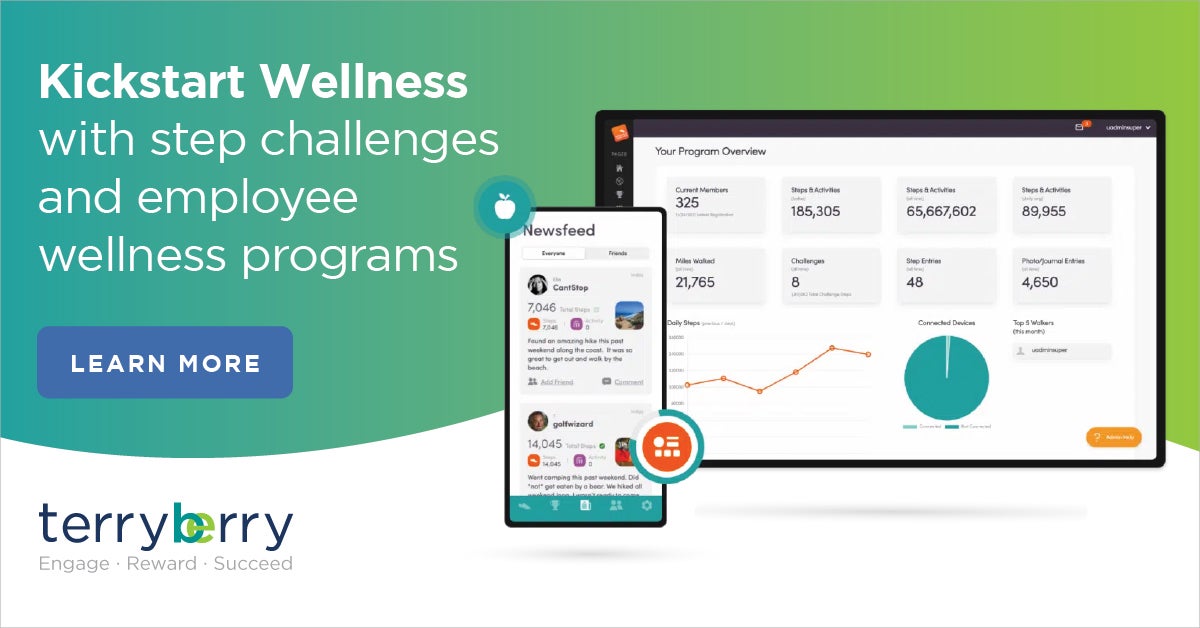May 11, 2023

Wellness programs have grown increasingly popular in corporate America. In fact, 52% of US companies offer some kind of employee wellness programs. And of those companies, 56% of employees participate. This has resulted in fewer sick days taken and higher job satisfaction at these companies.
The issue, however, usually isn't understanding the value of wellness programs. The issue can oftentimes be getting it right. Building a wellness program takes planning, time, and commitment. Not to mention, it can be hard to know where to even start.
To help, we developed a step-by-step guide to developing employee wellness programs that work.
What are the Benefits of Employee Wellness Programs?
The data is in – employee wellness programs benefit everyone involved. The strong support system of a wellness program cultivates long-term healthy habits in employees, leading to improved quality of life, and even a longer life span.
Employers who use wellness programs to support employee wellbeing also see returns on their investment and improvements in the overall workplace culture.
Study after study has proven that a strong employee wellness program –
- Increases productivity and employee engagement.
- Decreases health risks and increases healthy behaviors.
- Reduces company medical costs.
- Decreases employee turnover and absenteeism.
- Improves recruitment and retention.

Terryberry's employee wellness programs offer fun and inclusive wellness tracking and incentivized challenges for all.
Steps to Designing an Employee Wellness Program
A well thought-out employee wellness program takes initial time and effort but saves a headache in the long run. By considering every aspect at the beginning, you eliminate a lot of questions and mishaps later on.
Establish Buy-In From the Top Down
Chances are, your executives have already given the green light for a new wellness program; however, their approval is just the start. Gain genuine buy-in from management at all levels by explaining the benefits of the program, like the points listed above.
Among employees, two strategies can bolster interest and support for the program. First, form a wellness committee representative of a cross-section of the company; include employees from all levels and departments of the company. This wellness committee should have a say in the development of the program.
In addition, recruit wellness champions who will support your efforts to improve employee health through the wellness program by encouraging others to actively participate.
RELATED: 10 Simple and Effective Incentives for Employee Wellness Programs
Designate a Coordinator
Corporate wellness programs tend to have many moving parts. Wellness activities. Health assessments. Changing metrics. Like the old proverb says, ‘too many cooks in the kitchen spoil the soup.
Designate a single wellness coordinator to administer all aspects of the program. Depending on the scope of your program and the size of your organization, this could be a duty of an HR representative or a completely separate role within the company.
Conduct Assessments
A Workplace Health Assessment or Health Risk Assessment is a tool used in determining the current wellness practices of employees. It gathers information about each individual’s health status, habits, and risks.
Sometimes paired with biometric screenings, the data from this assessment can guide you in designing a wellness program to meet specific health needs.
You may also use a Workplace Health Culture Assessment to dive deeper into employees’ current attitudes and practices regarding all forms of well-being: physical, mental, emotional, and financial.
Determine Goals and Objectives
Using data from assessments, establish goals and objectives for your wellness program.
Think about opportunities for improvement, like:
- patterns of unhealthy behavior
- current fitness practices
- trends in data from biometric screenings
Also consider your company's goals, like:
- lower healthcare costs year over year
- reduce the number of sick days taken
- improve comradery amongst and between departments
When setting goals for your program, include items regarding both delivery and outcome. For example, you might aim to plan one lunch and learn a month (delivery), and strive to help employees increase their water intake (outcome).
Budget
It’s important to determine the budget early when developing employee wellness programs. This information will direct your choices in the delivery, components, and incentives of the program.
It may be hard to justify a large – or even small – budget for your wellness program when you’re balancing a number of other expenses. However, studies have examined the financial impact of a corporate wellness program, and one found an ROI of $6 for every $1 spent, while another found the average ROI to be $1.50 per dollar spent.
There are also benefits that can be harder to definitively measure, such as lower employee turnover, increased employee engagement, and improved morale.
Decide Who Will Host
One of the biggest choices you’ll make in developing an employee wellness program is to decide between internal or external hosting through a vendor. Both have benefits and drawbacks.
With internal hosting, the wellness coordinator plans and administers most or all of the program. This is typically cost-effective for a company on a tight budget, but it places the weight of the program entirely on one person’s shoulders.
Unfortunately, these people can't always dedicate the time they'd like to into these programs, limiting their potential.
Vendor hosting, on the other hand, outsources some or most of the program to a third-party vendor. These companies, like Terryberry, deliver wellness challenges through an existing platform.
This platform will likely house wellness challenges, wellness information, resources, and can be used for wellness-related communication.
You can find third party vendors at almost any price point. And while, you’re going to pay more for a vendor than doing wellness internally, ultimately you'll gain back time as well as a large support system.
Establish Components of the Employee Wellness Program
A wellness program typically consists of a variety of tangible and intangible components–
- Health education
- Wellness challenges
- Lifestyle coaching
- Communication channels
- On-site services (massage, gym, classes)
- Physical environment
- Flexible work policies
You’ll need to decide which components are going to be a part of your wellness program and to what extent. For example, if you choose to host wellness challenges, how often will they occur? What is the extent of your flexible work policies? How will you offer health education?
Making these decisions now gives structure to your wellness program. Once it gets going, you'll naturally see what resonates most with your team and you can adjust accordingly.
Determine Incentives and Rewards
It's important to remember that participation is key for an effective wellness program - however, getting participation can be tricky. This is because changing habits is a difficult task - if living a healthy lifestyle was easy for everyone, we wouldn't need wellness programs in the first place.
That's where incentives and rewards come in. Offering incentives and rewards gives your employees a reason to participate when they normally wouldn't.
But it's also important to offer incentives your employees care about. So, carefully consider what would be most beneficial to employees and the best encouragement to participate.
Offering participation-based incentives, progress-based incentives, or results-based incentives will help spark interest in different types of people.
Because each person has a unique starting point and unique goals, each person will be motivated by different reasons. Changing up your incentive criteria will help engage a wider range of people.

Terryberry's Reward Platform offers the largest selection of employee rewards on the market with international fulfillment and fast shipping.
RELATED: 6 Wellness Incentives to Improve Your Wellness Program
Communicate the Plan
More than of large employers offer a corporate wellness program, but only 60% of U.S. employees are aware that their company has a wellness program.
A wellness program is made of a variety of components, and while the person designing the program is well aware of everything that’s gone into it, other people don’t have the same advantage.
Create a document detailing every aspect of your wellness program. In addition, think about the best way to distribute it. Is sending the PDF through email going to suffice, or should you explain it in a staff meeting.
Another benefit to having an external wellness provider is having the ability to send push notifications to wellness participants' phones.
Analyze Metrics and Feedback
Metrics are a great starting point to analyze the effectiveness of your program. Look at numbers like –
- enrollment rate
- participation rate
- changes in health insurance costs
- absenteeism and presenteeism
In addition, seek out feedback from employees through both formal and informal means. Gather official data through anonymous surveys that rate satisfaction.
If employees are willing, talk to them about their experience in the program and what they’d like to see from it in the future. Sometimes those in-person conversations can drill down into what people really think.
RELATED: What is an Employee Engagement Survey? And Why Should You Care?
Make Terryberry a Part of Your Wellness Program
We make it easy to launch wellness challenges that keep employees engaged and motivated. Our comprehensive app allows employees to track fitness, mood, sleep, nutrition, mindfulness, and other metrics. Employees can also connect via the platform to encourage each other through message boards.
As an administrator, you’re provided with expert content and communication templates, detailed challenge results, and dedicated customer support. Contact us today to learn more!

Make Terryberry a Part of Your Wellness Program
In addition to corporate wellness programs, Terryberry provides solutions to help drive performance and retention through all facets of employee engagement: These solutions include:
- Service Awards and Performance Awards: Recognize and reward employees based on years of service awards, anniversaries, or performance.
- Social Recognition: Empower your employees and managers to recognize their peers and celebrate successes with an easy-to-use social recognition application.
- Feedback and Communication: Unlock improved feedback and communications with employee and customer feedback solutions.
- Wellness Programs: We make it easy to run wellness programs and activity challenges that increase engagement, expand corporate health, and build team camaraderie.
Ready to learn more? Schedule a demo with our team to get a hands-on walkthrough of how Terryberry can transform the culture of your workplace.


